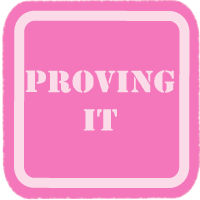
 Teaching Vocabulary
Teaching Vocabulary
 Vocabulary is perhaps the most basic component of language; without a variety of terms and phrases, students cannot communicate in the target language, either orally or in written form. Students’ vocabulary needs to be expanded over time; they need to learn new words and phrases in manageable chunks and they also need sufficient practice with these words and phrases before they can accept new ones. Let’s look at exactly what we mean by vocabulary, how we can effectively introduce new vocabulary to students, and what some key points are that we need to remember when teaching vocabulary.
Vocabulary is perhaps the most basic component of language; without a variety of terms and phrases, students cannot communicate in the target language, either orally or in written form. Students’ vocabulary needs to be expanded over time; they need to learn new words and phrases in manageable chunks and they also need sufficient practice with these words and phrases before they can accept new ones. Let’s look at exactly what we mean by vocabulary, how we can effectively introduce new vocabulary to students, and what some key points are that we need to remember when teaching vocabulary.
When we say “vocabulary”, what do we mean?
Vocabulary needs to be divided into formulaic expressions. Most people think of formulaic expressions as things like “Can I go to the washroom”. Formulaic expressions can, however, also be what we refer to as starter sentences like “Last night I…”; when students learn certain formulaic expressions/starters, they can change them accordingly.
When it comes to vocabulary, the place of nouns and verbs needs to be highlighted. It is very easy to teach nouns because the teacher can point to them, but unless a student has verbs, they can’t say anything or make expressions. In many languages, the more common verbs “to be” and “to have” are irregular verbs and they often aren’t cognates, so these verbs are of primary importance and need to be taught to students quite early in their learning. Because they can be so different, teaching verbs might mean more work; they will probably have to be taught in a more grammatical way, but the teacher can build on how one uses each of those verbs and nouns for a long time before going on to other things.
back to top
How can vocabulary be introduced to students?
One of the most effective ways of introducing vocabulary to students is by putting the new words into a particular context. Often vocabulary is grouped by theme, and the teacher can create a context related to the specific theme to assist in the learning process. For example, with vocabulary related to food, the teacher might present the new words by putting on a mock TV cooking show and pointing out each food item to the students. By introducing vocabulary in this way, teachers make good use of the power of first impressions and increases the likelihood that students will remember the vocabulary longer because of the context in which it was taught. For more information on context, click here.
What is important to remember when teaching vocabulary?
| Miller’s Magical Number | New vocabulary (words and phrases) should be chunked into groups of no more than 7 +/- 2, depending on their difficulty. |
| Mnemonics | Mnemonic devices can be used to help students remember words and/or groups of words and phrases. |
| Rhythm | Similar to mnemonics, vocabulary that has been chunked can be set to a particular rhythm that will help students remember the words. |
back to top









